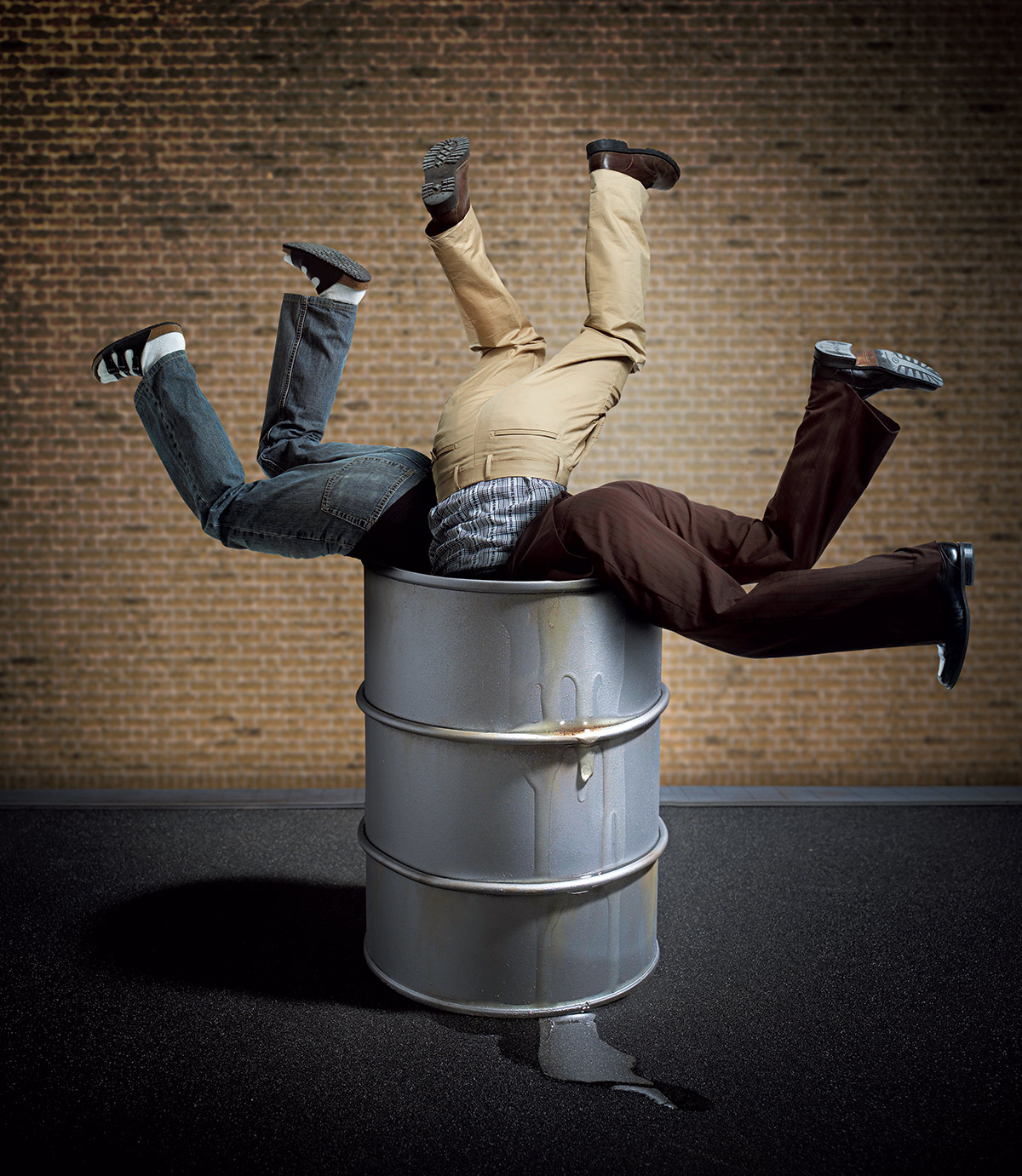Scenes from the Grease Wars

Photo illustration by C. J. Burton
Patrick Keaney isn’t someone you’d expect to find toiling under the hood of a car. Tall and rangy, with the square jaw of a B-movie actor, he’s a part-time Green Party operative by trade—he ran the Massachusetts campaign for Ralph Nader in 2000—and a full-time environmentalist by inclination. Both of those interests happened to align when, in March 2004, he bought an ’84 Volkswagen Rabbit from an old lady in Mission Hill, then jerry-rigged it to run on used cooking oil. Though Keaney was just looking to wean himself off petroleum, his tinkering would come to reverberate through one of Boston’s oldest underground economies in ways he could never have expected.
The conversion process, employed by green-minded folks since the 1980s, was surprisingly simple. Keaney simply secured a 12-gallon tank of vegetable oil in the car’s trunk and ran hoses to and from the diesel engine. When he started the car, it ran briefly on diesel until hot antifreeze coming through one hose melted the thick grease and allowed it to flow freely through the other one. Then he flicked a switch on his dash that turned off the diesel and started feeding grease into the engine, where it delivered roughly the same miles-per-gallon performance. Voilà—a homemade hybrid.
Keaney was a zealous convert. He and a friend soon started a company they called Green Grease Monkey, retrofitting other cars behind his Jamaica Plain apartment building. To herald the new enterprise, Keaney printed bumper stickers that read, “Powered by Foreign Oil,” with the word “Foreign” scratched out and “Vegetable” scribbled over it.
Keaney told the new grease-car drivers that he’d help them get the fuel they’d need. To make good on the deal, he convinced restaurant owners to give him the thick, yellow glop sitting in their back alleys. Since it’s illegal to pour spent grease down the drain, nearly every eatery in Boston that deep-fries food—there are about 2,500 of them—dumps the waste into 55-gallon drums. Even a small mom-and-pop can run through 25 gallons a week. For years, these restaurants paid collection companies about $50 for each drum they trucked away. Now, as Keaney’s need for fuel grew, it threatened to upset that long-standing arrangement. Restaurant groups that had been paying as much as $19,000 a year for pickup could erase their bill with one handshake.
After striking his first major deal with a Boston restaurant group in late 2005, Keaney started pumping grease from barrels outside the Blarney Stone in Dorchester and West on Centre in West Roxbury. That caught the eye of newspaper reporters hungry for stories with green angles, who dutifully noted that Keaney was carting the grease away for free. As the calls came in from other restaurant owners, he also signed up the Glynn Hospitality Group, which owns the Black Rose, the Purple Shamrock, and a half-dozen other bars and restaurants. Between just those two big suppliers, Keaney could count on as many as 1,000 gallons of grease a month.
If Keaney had known more about the history of grease in Boston, if he had known who controlled the market for it and how hard they had fought to get it, he might have thought twice about edging onto their turf. He might have seen the grease war coming. But he didn’t. And so he was somewhat surprised when a representative of A & K Waste—the company that had been making good money off Keaney’s two new clients—called him and his partner in for a meeting. We have something we’d like to talk to you about, the man on the phone said.